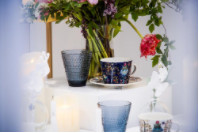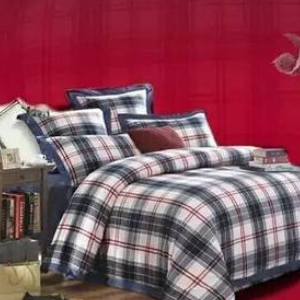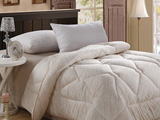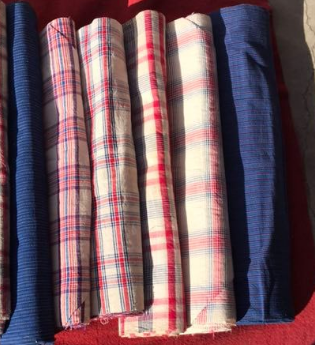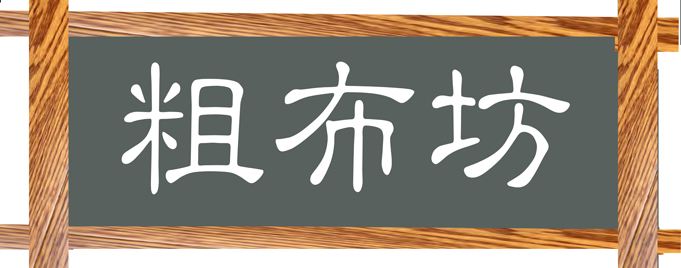The Neolithic "spinning fiber" unearthed from the Yangshao Cultural Site in Henan Province; It represents the embryonic form of textile industry as early as the Neolithic Age. In the Shang and Zhou Dynasties, a wooden textile tool - waist machine was born; In the Han Dynasty, oblique beam looms appeared again, which were very advanced looms in the world at that time; At the time of Yuan and Ming dynasties, people had applied various techniques to the weaving process of cotton, silk and spun silk, and at the same time, the rough cloth manufacturing was becoming mature; In the Qing Dynasty, pure cotton hand woven cloth was also used as tribute to the imperial court and valuable traditional exchange gifts for foreign friends and neighbors, and established extensive economic and foreign trade relations with Japan, Korea, India, Persia, Arabia and many other Asian and European countries. Pure cotton hand woven cloth has shown an important position in people's life, clothing, and clothing at that time. At the end of the Qing Dynasty, before foreign looms entered China, cloth merchants were mainly engaged in hand weaving with native looms. From the introduction of foreign yarn to the cotton weaving with foreign warp and local weft, it created a precedent for China's textile reform. With the development of industrial reform, textile machinery from its inception to its entry into China, greatly improved the textile efficiency, saved costs, and high-quality and inexpensive foreign cloth came out, It has replaced thousands of years of homespun cloth, but with the development of modern industry, pollution has increasingly become the focus of people's attention. While pursuing green and environmental protection, people have close relations with people in clothing, food, housing and transportation. Old coarse cloth has been highly praised by people, and now it is in the Central Plains - Shandong; Thousands of rural women continued to write the simple, beautiful and fashionable movement of the old coarse cloth with their magical hands. In today's consumption trend of advocating green and returning to nature, the cotton texture, ancient folk crafts, geometric patterns dominated by yarn dyed fabrics, and additional modern fashion elements of Shandong old coarse cloth are increasingly becoming the home fashion products pursued by middle and high-end people. As one of the representatives of the Yellow River culture, the old coarse cloth culture witnessed its development.
technology
The ancient rough cloth weaving process is extremely complex. From cotton picking to weaving, it goes through 72 processes, including ginning, marbling, spinning, thread beating, sizing, chaos, falling, warp, brushing, heald making, weaving, pulling out, hanging, tying, weaving, and weaving. Now it is a modern era. All yarns are machine spun, and manual spinning has long been a history, Those spinning wheels have also become antiques. The hand spun yarn of the old Yellow River is also machine spun, but one twist is large and the other is small. The hand spun effect appears after the combination. Cutting machines and warping machines can be either manual or mechanical, or old coarse cloth that is completely hand woven. They can only be used as special gifts or high-end consumption.
The pattern of the old coarse cloth is an endless geometric figure composed of hundreds of color lines transformed from the seven basic colors of red, orange, yellow, green, green, blue, and purple. The colorful patterns are ever-changing and ingenious. The styles are simple and bold, as well as exquisite and fashionable. Every process and product contains complicated labor, and it is a leader in modern handicraft industry.
characteristic
The old coarse cloth is cool and comfortable, breathable and sweat absorbing, bright in color, elegant in appearance, thick in feel, thick in line, deep in texture, flat and wrinkle free, non curling, anti-static and other characteristics. Long term use can improve human microcirculation, regulate nerves, relax meridians, and promote sleep. It is a real green product, realizing the millennium dream of combining traditional folk crafts with natural materials, and making the charming craft and culture of the old coarse cloth inherited and carried forward.
Development prospect
1. The brand economy of China textile industry has emerged as the times require. With the continuous improvement of consumers' requirements for grade, quality and product added value, home textile products have increasingly entered the era of brand consumption. In the near future, the resource integration and reform will be carried out for the old coarse cloth home textile industry. Many unqualified manufacturers will be eliminated, and their products will be banned or their unqualified products will be destroyed, or they can only be branded to manufacturers with brands. Branded goods will be replaced, which is more conducive to improving/increasing consumers' rights and physical and mental health.
2. Product design has entered the stage of original design, and whoever owns the original design will have the initiative in the market. Characteristic and individuality become the key words of competition, and the design concept of old coarse cloth will gradually move from "soil" to fashion, diversification and personalization. It is used to meet the new generation's pursuit of the added value of household accessories.
3. Medium grade brand old coarse cloth will become the mainstream of coarse cloth market and will be favored by the market, thus growing rapidly. The market of low-grade old coarse cloth will be greatly impacted.
4. As the old coarse cloth is a product developed from the countryside, the strategic focus will enter the city, penetrate into the hearts of urban consumers with healthy and fashionable consumption concepts, and become a new urban home textile darling. At the same time, it will also drive the villages and towns to have a new understanding and change of the old rough cloth, and complete the restructuring of the old rough cloth industry.
5. The old coarse cloth should also be tested, and the test report should be issued. The old coarse cloth without "trademark" or "test report" can only be sold in towns or stalls. It will never appear in the exclusive stores, shopping malls, and stores in the city.

